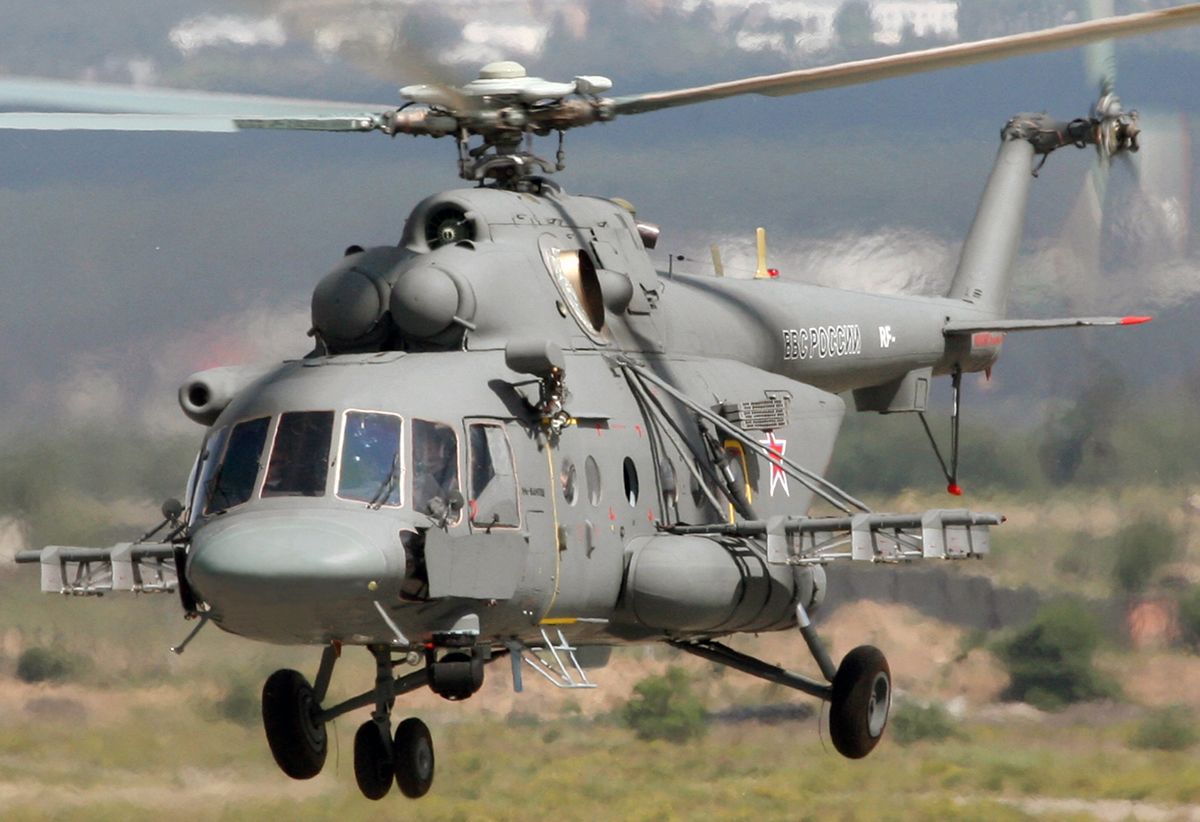Special helicopter squadrons will be activated in each of the military districts to infiltrate and exfiltrate commandos and provide close air support for them, according to the Izvestia daily newspaper.
The crews of the new units will be trained to fly nap of the earth and attack the enemy while remaining invisible to him.
The new squadrons are being stood up now, a Russian Defense Ministry officer close to the subject told the Izvestia daily.
The helicopter units intended to operate in support of the Army Special Forces (Spetsnaz) are being activated on the basis of the regimental and brigade Mi-8AMTSh (NATO reporting name: Hip) and Mi-8MTV-5 troop carrier squadrons. Unlike the line unit crews, the crews with the Spetsnaz squadrons will be given in-depth training to fly in foul weather and in terrain-following mode at night, hugging the ground to dodge the unwelcome attention of the enemy. The crews also will learn several tactical maneuvers enabling them to dupe the enemy and landing special operators behind the enemy’s lines.
According to the Izvestia daily’s source, the pilots will receive profound training in using the weapons, including guided missiles and unguided rockets, under degraded visibility conditions in addition to the troop landing skills.
The crews of the Mil Mi-26 (Halo) heavylift helicopters will be trained in landing Spetsnaz troopers too. The job of the Halos will be hauling the Gusar and Tigr wheeled vehicles operated by the Special Forces groups.
Certainly, there are no plans to form a separate Mi-26 squadron for the special operators, the Defense Ministry official noted, but several of the Mi-26 crews with the Army Aviation regiments and brigades will receive special training. The Mi-26’s dimensions limit the type’s ability to operate behind the enemy’s lines, but the armored cars will certainly not fit the cabins of the Mi-8AMTSh and Mi-8MTV-5.
Until recently, the informal special operations air unit of the Russian Aerospace Force (RusAF) has been the 344th Instructor-Pilot Squadron of the Army Aviation Combat Training and Conversion Center in the town of Torzhok.
The Torzhok-based instructor-pilots have operated hand in glove with the Russian Special Operations Forces (SOF) since the mid-2000s, including experimental exercises designed to land special operators at night in the mountains close to Mount Elbrus. In 2008, the then defense minister, Anatoly Serdyukov, assigned operational control of the squadron to the Senezh Special Operations Center.
The crews with the 344th Center fought against Georgia in August 2008 and took part in the special operation in Crimea in spring 2014. It is their unique expertise that laid the foundation of the training curriculum for the newly activated Spetsnaz air squadrons, a RusAF officer familiar with the issue told the Izvestia daily.
According to expert Anton Lavrov, the air forces of virtually all developed states include helicopter units specializing in special forces support, with the helicopter units bearing the brunt of the wars in Afghanistan and Iraq.
“France has the 4th Helicopter Regiment and Italy has the 9th Air Squadron ‘Francesco Baracca’,” Lavrov says. “However, the Pentagon took the most radical measure. In particular, the US Air Force has several SOF squadrons flying Osprey tiltrotors and the US Army includes a whole special operations helicopter regiment that has been infiltrating and exfiltrating SOF troopers since the invasion of Grenada in 1982.”










